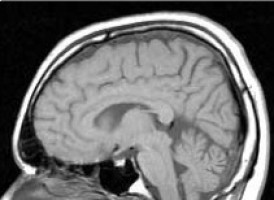
Mount Sinai researchers have identified a targeted therapy for adolescent patients with neuroblastoma, a deadly paediatric nerve cancer, who would otherwise have no treatment options, according to a study published in Cancer Cell.
Neuroblastoma is one of the most common and aggressive paediatric nervous system tumours and generally has a poor prognosis, particularly when it advances in older children.
Treatment success for the disease varies, but is exponentially less in adolescent patients, particularly because the disease lacks effective targeted therapies.
The Mount Sinai researchers found that neuroblastoma in older children and adolescents harbouring deletions within a gene called ATRX may be responsive to a targeted therapy called tazemetostat.
Tazemetostat disables an enzyme called EZH2 that inhibits genes that promote normal neuron development, in turn killing neuroblastoma cells.
Neuroblastoma arises in immature nerve cells of the adrenal glands and portions of the spine during the development of the sympathetic nervous system, which controls the body's "flight or fight" response to stress.
EZH2 inhibitors are already being tested in phase I and phase II clinical trials for other cancers, including lymphomas, sarcomas, and other solid tumours, with some favourable results.
"We hypothesised that mutant ATRX proteins contribute to aggressive neuroblastoma," said Emily Bernstein, PhD, Professor of Oncological Sciences at The Tisch Cancer Institute at the Icahn School of Medicine at Mount Sinai and senior corresponding author.
"In this study, we aimed to decipher the underlying biology of these altered proteins in neuroblastoma, a tumour for which effective therapeutic strategies remain obscure, and to exploit identified dependencies."
Mount Sinai scientists continue to expand this research into the role of the mutant ATRX protein in the laboratory and hope to eventually open a clinical trial with collaborating institutions.
Based on this research, they believe that EZH2 inhibitors could also be effective in other ATRX mutant cancers, such as paediatric glioblastoma multiforme and osteosarcoma.
Source: Mount Sinai
We are an independent charity and are not backed by a large company or society. We raise every penny ourselves to improve the standards of cancer care through education. You can help us continue our work to address inequalities in cancer care by making a donation.
Any donation, however small, contributes directly towards the costs of creating and sharing free oncology education.
Together we can get better outcomes for patients by tackling global inequalities in access to the results of cancer research.
Thank you for your support.